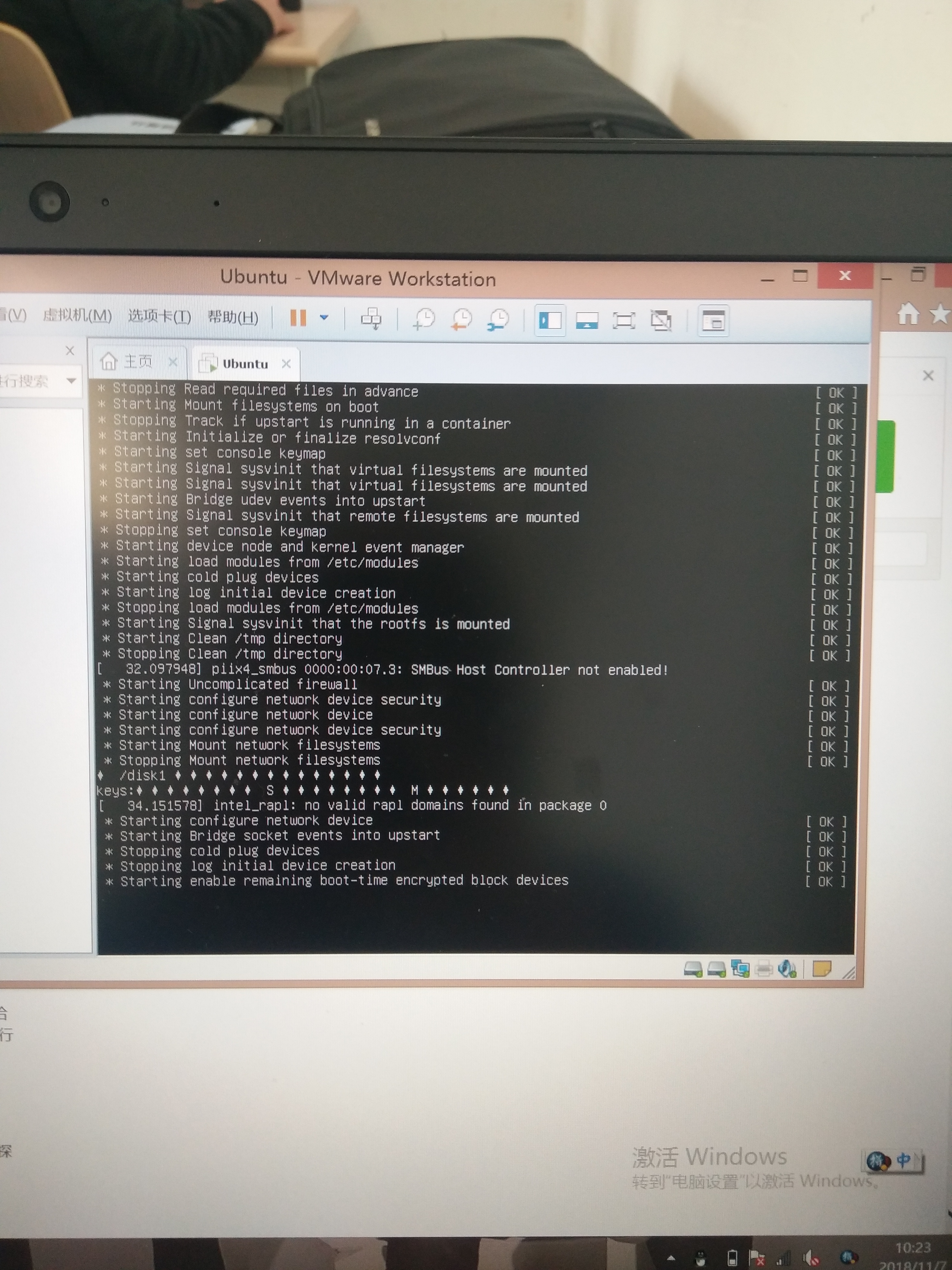可以将文章内容翻译成中文,广告屏蔽插件可能会导致该功能失效(如失效,请关闭广告屏蔽插件后再试):
问题:
I would like to be able to search a table as follows for smith as get everything that it within 1 variance.
Data:
O\'Brien
Smithe
Dolan
Smuth
Wong
Smoth
Gunther
Smiht
I have looked into using Levenshtein distance does anyone know how to implement this with it?
回答1:
In order to efficiently search using levenshtein distance, you need an efficient, specialised index, such as a bk-tree. Unfortunately, no database system I know of, including MySQL, implements bk-tree indexes. This is further complicated if you\'re looking for full-text search, instead of just a single term per row. Off-hand, I can\'t think of any way that you could do full-text indexing in a manner that allows for searching based on levenshtein distance.
回答2:
There is a mysql UDF implementation of Levenshtein Distance function
https://github.com/jmcejuela/Levenshtein-MySQL-UDF
It is implemented in C and has better performance than the \"MySQL Levenshtein distance query\" mentioned by schnaader
回答3:
An implementation for the damerau-levenshtein distance can be found here:
Damerau-Levenshtein algorithm: Levenshtein with transpositions
The improvement over pure Levenshtein distance is that the swapping of characters is considered. I found it in the comments of schnaader\'s link, thanks!
回答4:
The function given for levenshtein <= 1 above is not right -- it gives incorrect results for e.g., \"bed\" and \"bid\".
I modified the \"MySQL Levenshtein distance query\" given above, in the first answer, to accept a \"limit\" that will speed it up a little. Basically, if you only care about Levenshtein <= 1, set the limit to \"2\" and the function will return the exact levenshtein distance if it is 0 or 1; or a 2 if the exact levenshtein distance is 2 or greater.
This mod makes it 15% to 50% faster -- the longer your search word, the bigger the advantage (because the algorithm can bail earlier.) For instance, on a search against 200,000 words to find all matches within distance 1 of the word \"giggle,\" the original takes 3 min 47 sec on my laptop, versus 1:39 for the \"limit\" version. Of course, these are both too slow for any real-time use.
Code:
DELIMITER $$
CREATE FUNCTION levenshtein_limit_n( s1 VARCHAR(255), s2 VARCHAR(255), n INT)
RETURNS INT
DETERMINISTIC
BEGIN
DECLARE s1_len, s2_len, i, j, c, c_temp, cost, c_min INT;
DECLARE s1_char CHAR;
-- max strlen=255
DECLARE cv0, cv1 VARBINARY(256);
SET s1_len = CHAR_LENGTH(s1), s2_len = CHAR_LENGTH(s2), cv1 = 0x00, j = 1, i = 1, c = 0, c_min = 0;
IF s1 = s2 THEN
RETURN 0;
ELSEIF s1_len = 0 THEN
RETURN s2_len;
ELSEIF s2_len = 0 THEN
RETURN s1_len;
ELSE
WHILE j <= s2_len DO
SET cv1 = CONCAT(cv1, UNHEX(HEX(j))), j = j + 1;
END WHILE;
WHILE i <= s1_len and c_min < n DO -- if actual levenshtein dist >= limit, don\'t bother computing it
SET s1_char = SUBSTRING(s1, i, 1), c = i, c_min = i, cv0 = UNHEX(HEX(i)), j = 1;
WHILE j <= s2_len DO
SET c = c + 1;
IF s1_char = SUBSTRING(s2, j, 1) THEN
SET cost = 0; ELSE SET cost = 1;
END IF;
SET c_temp = CONV(HEX(SUBSTRING(cv1, j, 1)), 16, 10) + cost;
IF c > c_temp THEN SET c = c_temp; END IF;
SET c_temp = CONV(HEX(SUBSTRING(cv1, j+1, 1)), 16, 10) + 1;
IF c > c_temp THEN
SET c = c_temp;
END IF;
SET cv0 = CONCAT(cv0, UNHEX(HEX(c))), j = j + 1;
IF c < c_min THEN
SET c_min = c;
END IF;
END WHILE;
SET cv1 = cv0, i = i + 1;
END WHILE;
END IF;
IF i <= s1_len THEN -- we didn\'t finish, limit exceeded
SET c = c_min; -- actual distance is >= c_min (i.e., the smallest value in the last computed row of the matrix)
END IF;
RETURN c;
END$$
回答5:
I am setting up a search based on Levenshtein or Damerau-Levenshtein (probably the latter) for multiple searches over an indexed text, based on a paper by by Gonzalo Navarro and Ricardo Baeza-yates: link text
After building a suffix array (see wikipedia), if you are interested in a string with at most k mismatches to the search string, break the search string into k+1 pieces; at least one of those must be intact. Find the substrings by binary search over the suffix array, then apply the distance function to the patch around each matched piece.
回答6:
you can use this function
CREATE FUNCTION `levenshtein`( s1 text, s2 text) RETURNS int(11)
DETERMINISTIC
BEGIN
DECLARE s1_len, s2_len, i, j, c, c_temp, cost INT;
DECLARE s1_char CHAR;
DECLARE cv0, cv1 text;
SET s1_len = CHAR_LENGTH(s1), s2_len = CHAR_LENGTH(s2), cv1 = 0x00, j = 1, i = 1, c = 0;
IF s1 = s2 THEN
RETURN 0;
ELSEIF s1_len = 0 THEN
RETURN s2_len;
ELSEIF s2_len = 0 THEN
RETURN s1_len;
ELSE
WHILE j <= s2_len DO
SET cv1 = CONCAT(cv1, UNHEX(HEX(j))), j = j + 1;
END WHILE;
WHILE i <= s1_len DO
SET s1_char = SUBSTRING(s1, i, 1), c = i, cv0 = UNHEX(HEX(i)), j = 1;
WHILE j <= s2_len DO
SET c = c + 1;
IF s1_char = SUBSTRING(s2, j, 1) THEN
SET cost = 0; ELSE SET cost = 1;
END IF;
SET c_temp = CONV(HEX(SUBSTRING(cv1, j, 1)), 16, 10) + cost;
IF c > c_temp THEN SET c = c_temp; END IF;
SET c_temp = CONV(HEX(SUBSTRING(cv1, j+1, 1)), 16, 10) + 1;
IF c > c_temp THEN
SET c = c_temp;
END IF;
SET cv0 = CONCAT(cv0, UNHEX(HEX(c))), j = j + 1;
END WHILE;
SET cv1 = cv0, i = i + 1;
END WHILE;
END IF;
RETURN c;
END
and for getting it as XX% use this function
CREATE FUNCTION `levenshtein_ratio`( s1 text, s2 text ) RETURNS int(11)
DETERMINISTIC
BEGIN
DECLARE s1_len, s2_len, max_len INT;
SET s1_len = LENGTH(s1), s2_len = LENGTH(s2);
IF s1_len > s2_len THEN
SET max_len = s1_len;
ELSE
SET max_len = s2_len;
END IF;
RETURN ROUND((1 - LEVENSHTEIN(s1, s2) / max_len) * 100);
END
回答7:
If you only want to know if the levenshtein-distance is at most 1, you can use the following MySQL function.
CREATE FUNCTION `lv_leq_1` (
`s1` VARCHAR( 255 ) ,
`s2` VARCHAR( 255 )
) RETURNS TINYINT( 1 ) DETERMINISTIC
BEGIN
DECLARE s1_len, s2_len, i INT;
SET s1_len = CHAR_LENGTH(s1), s2_len = CHAR_LENGTH(s2), i = 1;
IF s1 = s2 THEN
RETURN TRUE;
ELSEIF ABS(s1_len - s2_len) > 1 THEN
RETURN FALSE;
ELSE
WHILE SUBSTRING(s1,s1_len - i,1) = SUBSTRING(s2,s2_len - i,1) DO
SET i = i + 1;
END WHILE;
RETURN SUBSTRING(s1,1,s1_len-i) = SUBSTRING(s2,1,s2_len-i) OR SUBSTRING(s1,1,s1_len-i) = SUBSTRING(s2,1,s2_len-i+1) OR SUBSTRING(s1,1,s1_len-i+1) = SUBSTRING(s2,1,s2_len-i);
END IF;
END
This is basically a single step in the recursive description of the levenshtein distance.
The function returns 1, if the distance is at most 1, else it returns 0.
Since this function does not completely compute the levenshtein-distance, it is much faster.
You can also modify this function such that it returns true if the levenshtein-distance is at most 2 or 3, by calling it self recursively. If MySQL does not support recursive calls, you can copy slightly modified versions of this function two times and call them instead. But you should not use the recursive function to calculate the exact levenshtein-distance.
回答8:
I had a specialized case of k-distance searching and after installing the Damerau-Levenshtein UDF in MySQL found that the query was taking too long. I came up with the following solution:
- I have a very restrictive search space (9 character string limited to numeric values).
Create a new table (or append columns to your target table) with columns for each character position in your target field. ie. My VARCHAR(9) ended up as 9 TINYINT columns + 1 Id column that matches my main table (add indexes for each column). I added triggers to ensure that these new columns always get updated when my main table gets updated.
To perform a k-distance query use the following predicate:
(Column1=s[0]) + (Column2=s[1]) + (Column3=s[2]) + (Column4=s[3]) + ... >= m
where s is your search string and m is the required number of matching characters (or m = 9 - d in my case where d is the maximum distance I want returned).
After testing I found that a query over 1 million rows that was taking 4.6 seconds on average was returning matching ids in less than a second. A second query to return the data for the matching rows in my main table similarly took under a second. (Combining these two queries as a subquery or join resulted in significantly longer execution times and I\'m not sure why.)
Though this is not Damerau-Levenshtein (doesn\'t account for substitution) it suffices for my purposes.
Though this solution probably doesn\'t scale well for a larger (length) search space it worked for this restrictive case very well.
回答9:
Based on Chella\'s answer and Ryan Ginstrom\'s article, a fuzzy search could be implemented as so:
DELIMITER $$
CREATE FUNCTION fuzzy_substring( s1 VARCHAR(255), s2 VARCHAR(255) )
RETURNS INT
DETERMINISTIC
BEGIN
DECLARE s1_len, s2_len, i, j, c, c_temp, cost INT;
DECLARE s1_char CHAR;
-- max strlen=255
DECLARE cv0, cv1 VARBINARY(256);
SET s1_len = CHAR_LENGTH(s1), s2_len = CHAR_LENGTH(s2), cv1 = 0x00, j = 1, i = 1, c = 0;
IF s1 = s2 THEN
RETURN 0;
ELSEIF s1_len = 0 THEN
RETURN s2_len;
ELSEIF s2_len = 0 THEN
RETURN s1_len;
ELSE
WHILE j <= s2_len DO
SET cv1 = CONCAT(cv1, UNHEX(HEX(0))), j = j + 1;
END WHILE;
WHILE i <= s1_len DO
SET s1_char = SUBSTRING(s1, i, 1), c = i, cv0 = UNHEX(HEX(i)), j = 1;
WHILE j <= s2_len DO
SET c = c + 1;
IF s1_char = SUBSTRING(s2, j, 1) THEN
SET cost = 0; ELSE SET cost = 1;
END IF;
SET c_temp = CONV(HEX(SUBSTRING(cv1, j, 1)), 16, 10) + cost;
IF c > c_temp THEN SET c = c_temp; END IF;
SET c_temp = CONV(HEX(SUBSTRING(cv1, j+1, 1)), 16, 10) + 1;
IF c > c_temp THEN
SET c = c_temp;
END IF;
SET cv0 = CONCAT(cv0, UNHEX(HEX(c))), j = j + 1;
END WHILE;
SET cv1 = cv0, i = i + 1;
END WHILE;
END IF;
SET j = 1;
WHILE j <= s2_len DO
SET c_temp = CONV(HEX(SUBSTRING(cv1, j, 1)), 16, 10);
IF c > c_temp THEN
SET c = c_temp;
END IF;
SET j = j + 1;
END WHILE;
RETURN c;
END$$
DELIMITER ;




